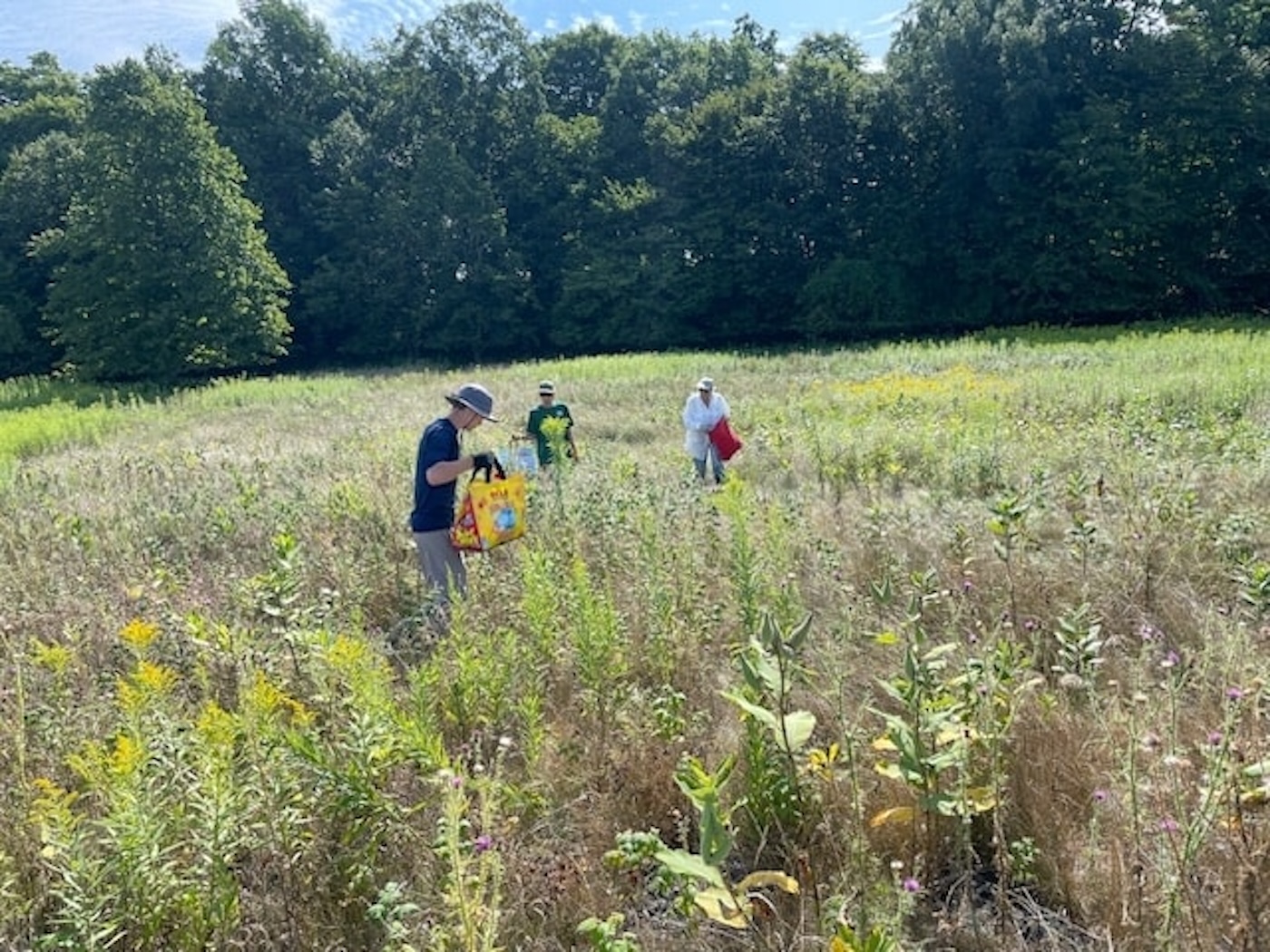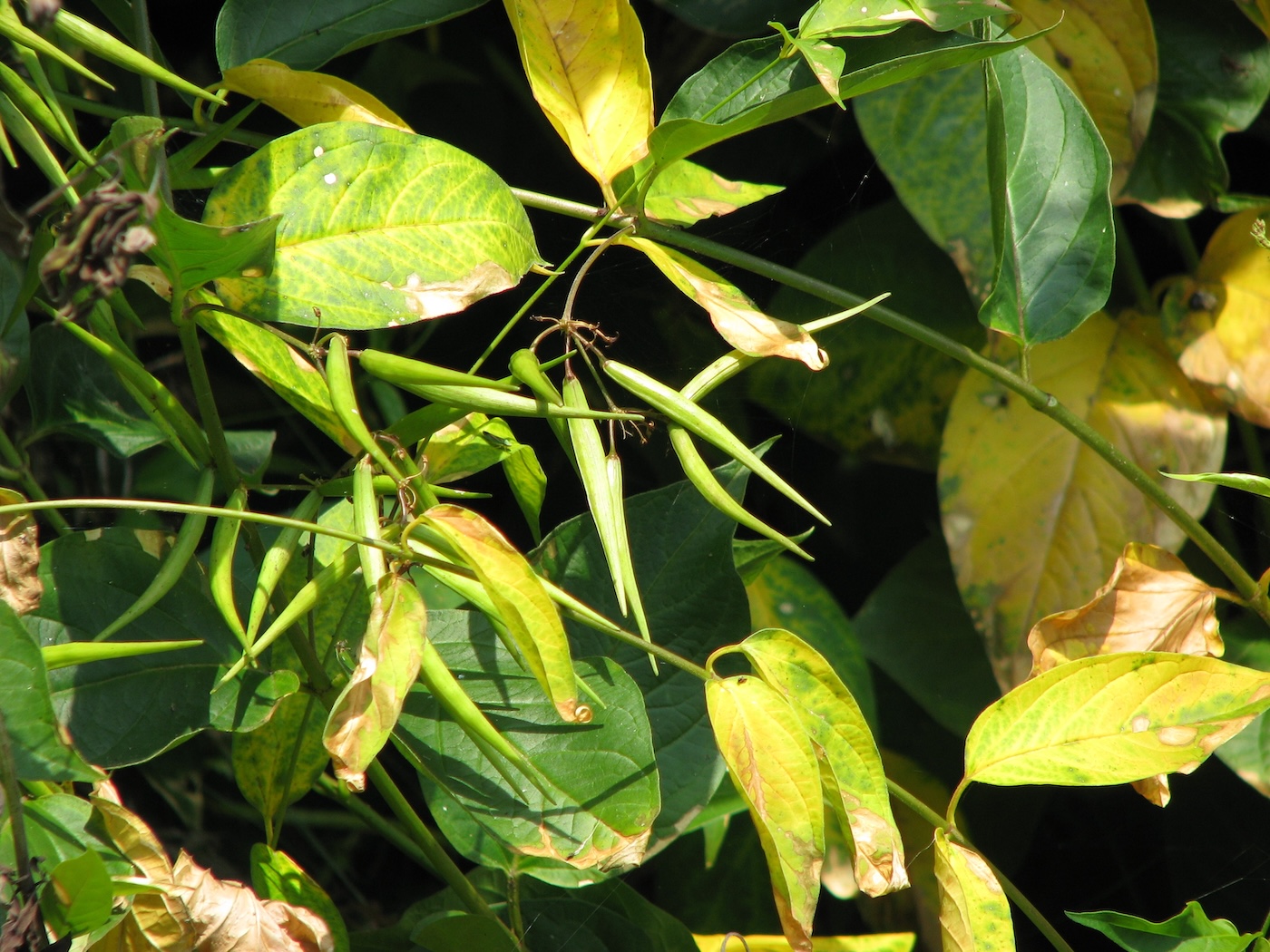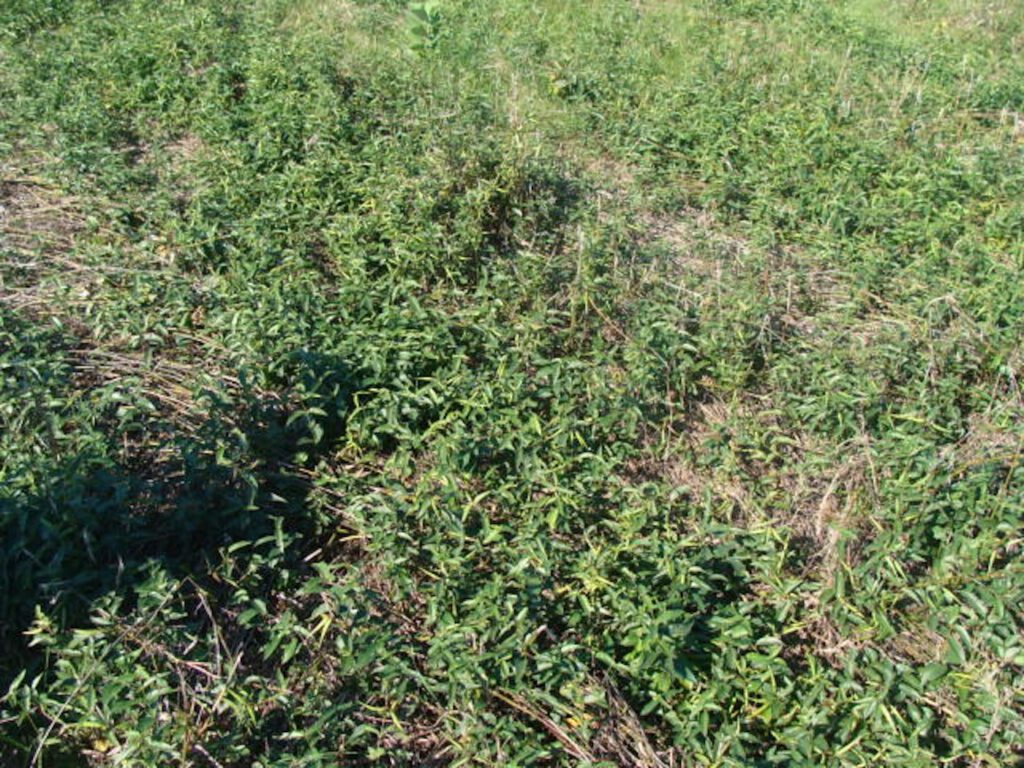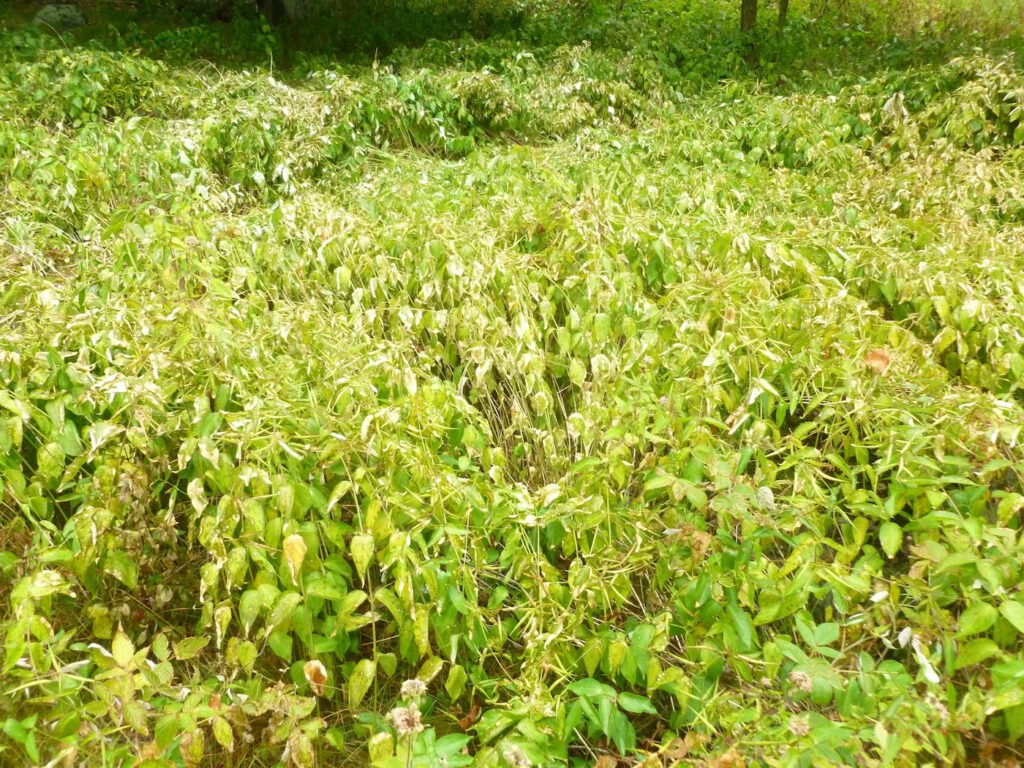Invasive species like Pale Swallow-wort can have a profoundly detrimental impact on some habitats.
Invasive species are non-native organisms that aggressively compete with native species, causing significant environmental and economic damage in the U.S.
Early detection, control, and education are crucial for managing their spread. TILT collaborates with the St. Lawrence Eastern Lake Ontario Partnership for Regional Invasive Species Management (SLELO-PRISM) to educate Stewardship Volunteers on identifying and mapping invasive species at preserves using iMap. The Stewardship staff then uses this data to eradicate or manage the species.


For more information, visit SLELO PRISM or contact the Land Trust at 315-686-5345 or info@tilandtrust.org.
Pale Swallow-wort is a long-lived, perennial vine in the milkweed family, found in dense patches on several islands and the mainland. Its oval leaves are 3-4 inches long, and its creamy-pink to reddish-brown flowers are star-shaped. The plant produces slender, 2-3 inch pods that release wind-dispersed seeds when ripe. Pale Swallow-wort’s clumping growth makes eradication challenging.
This invasive species threatens ecosystems by crowding out native plants, disrupting succession, and altering habitat structures. It reduces grassland bird populations and can change soil microbial communities, further displacing native species.
Controlling Pale Swallow-wort is difficult, requiring specialized efforts for eradication. While chemical herbicides are effective, they demand careful training for safe use. TILT is collaborating with landowners in the Thousand Islands to manage its spread.



